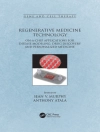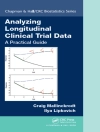This textbook is about the law, economics, practical assessment, and the management of risky activities arising from routine, catastrophic environmental and occupational exposures to hazardous agents. The textbook begins where emission and exposure analysis end by providing estimates or predictions of deleterious exposures. Thus, we deal with determining the nature and form of relations between exposure and response, damage functions, and with the principles and methods used to determine the costs and benefits of risk management actions from the vantage point of single and multiple decision-makers. Today, national and international laws, conventions and protocols are increasingly concerned with reducing environmental and health risks through minimizing exposure to toxic substances, bacteria, viruses and other noxious agents. They do so through risk methods. The reason for the now worldwide use of risk assessment and management is that individuals and society must decide when, and at what cost, past and future hazardous conditions can either be avoided or minimized. In this process, society must account for the limited resources it can spend to remain sustainable. Risk-based methods play a pivotal role in identifying and ranking alternative, sustainable choices, while accounting for uncertainty and variability. Specifically, most reductions in risks require a balancing of the costs and benefits associated with the action to reduce exposure to a hazard and thus risk. This balancing necessarily involves linking exposure and response through causation. This essential aspect of risk assessment and management, if done incorrectly, can be costly to society.
Daftar Isi
Legal Principles, Uncertainty, and Variability in Risk Assessment and Management.- Sustainability and Making Decisions Under Uncertainty.- Risk, Cost, and Benefit Analysis (RCBA) in Risk Assessment and Management.- Exposure-Response Models for Risk Assessment.- Probabilistic Dose-Response Models and Concepts of Toxicology.- Monte Carlo, Bootstraps and Other Methods to Quantify or Propagate Variability and Uncertainty.- Causal Models: Influence Diagrams, Bayesian Networks, Classification and Regression Trees.- Meta-Analysis, Pooling Sample Data, and Statistical Decision Rules.- Contingency Tables in Risk Assessment and Management.- Statistical Associations and Causation for Risk Assessment and Management.- Risk Assessment Frameworks, Calculations of Risk and Toxicological Doses.- Practical Analysis of Decisions for Risk Management.












